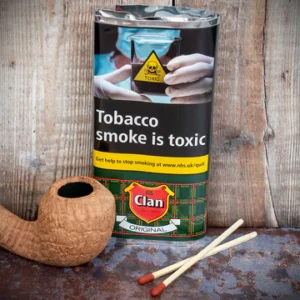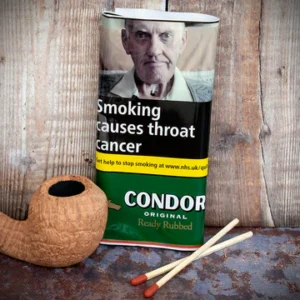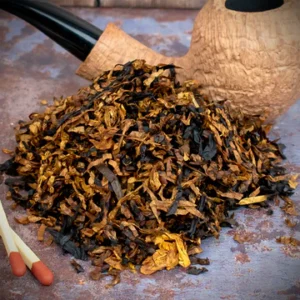Rolling Tobacco Cigarettes
Rolling Tobacco Cigarettes: Which Is Better for Your Wallet, Health, and Lifestyle?
Introduction
Over the past decade, more smokers have begun to question the real differences between rolling tobacco and cigarettes. With the cost of factory-made packs climbing each year and public health campaigns becoming louder, many are reconsidering how — and what — they smoke. Some choose roll-your-own tobacco (RYO) to save money; others believe it might be a less harmful option. But is that actually true?
In this detailed tobacco comparison, we’ll unpack every aspect of rolling tobacco vs cigarettes: from cost and composition to health impact, environmental footprint, and lifestyle convenience. Whether you’re a long-time smoker, a new roller, or simply curious about the facts, this guide offers a balanced, data-driven view to help you decide which option — if either — really fits your needs.
What Is Rolling Tobacco?
Rolling tobacco, often known as hand-rolling tobacco or shag tobacco, is loose-leaf tobacco sold in pouches or tins. Smokers use thin papers and filters to make their own cigarettes, controlling the amount of tobacco in each roll. This gives them flexibility and a sense of craftsmanship that machine-made cigarettes lack.
Typically, rolling tobacco is made from air-cured or sun-cured varieties. Many brands promote a “smoother” or more “natural” taste because RYO blends may contain fewer additives than pre-manufactured cigarettes. Some smokers claim that hand-rolled cigarettes burn more slowly and deliver a richer flavor. Others prefer them because they can adjust nicotine strength by changing how tightly they roll or how much tobacco they include.
The practice of rolling one’s own cigarette is centuries old. Historically, it was more popular among working-class smokers who sought an affordable way to enjoy tobacco. Today, however, it has become a lifestyle choice for many — a ritual that combines mindfulness, dexterity, and personalisation.
Common Rolling Tobacco Brands
In the U.K. and across Europe, brands such as Amber Leaf, Golden Virginia, Drum, and Old Holborn dominate the market. Each offers distinct flavor profiles and moisture levels, influencing how easily the tobacco rolls and burns. Premium brands often highlight “natural” or “additive-free” qualities, though these labels don’t necessarily imply reduced health risks.
What Are Manufactured Cigarettes?
Manufactured cigarettes, or “factory-made cigarettes,” are pre-rolled and sold in packs. Each stick contains finely cut tobacco, paper, a filter, and numerous chemical additives. Major global brands — such as Marlboro, Camel, and Benson & Hedges — use industrial processes to ensure consistent flavor, nicotine delivery, and burn time.
Unlike hand-rolled options, these cigarettes are designed for uniformity. Every puff, burn rate, and drag feels nearly identical from one stick to the next. This convenience is part of what made factory cigarettes the dominant form of smoking throughout the 20th century.
However, convenience often comes at a cost. Because they’re mass-produced, factory cigarettes include additives like humectants (to retain moisture), preservatives, flavor enhancers, and burn accelerants. Studies show that an average cigarette may contain several hundred additional substances beyond tobacco itself — many of which are released as toxic compounds when burned.
Rolling Tobacco vs Cigarettes: The Key Physical Differences
Although both products deliver nicotine through combustion, their physical properties differ in ways that affect flavour, cost, and even health outcomes.
| Feature | Rolling Tobacco | Manufactured Cigarettes |
|---|---|---|
| Composition | Primarily loose tobacco leaves, may have fewer additives | Contains processed tobacco, paper, filter, and additives |
| Customisation | User controls weight, tightness, and filter type | Fixed weight and design |
| Burn Rate | Often slower, depending on roll tightness | Consistent and faster |
| Cost Efficiency | Usually cheaper per cigarette | Higher price due to taxes and branding |
| Convenience | Requires time and skill to roll | Ready to smoke instantly |
Many smokers enjoy the ritual of rolling — the tactile process, the smell of fresh tobacco, the ability to experiment with flavours or paper types. But others prefer the simplicity of opening a pack and lighting up without any effort.
Are Rolling Cigarettes Really Cheaper?
This is one of the most common motivations behind switching from factory-made cigarettes to rolling tobacco. On a per-gram basis, rolling tobacco is significantly less expensive in the U.K. than pre-rolled packs. For instance, 50 grams of mid-range RYO tobacco can yield roughly 70 to 80 cigarettes, depending on how much you use per roll. A smoker who consumes a pack a day could, in theory, cut their monthly cost nearly in half.
However, the picture isn’t quite that simple. Rolling your own requires extra materials — papers, filters, and sometimes a rolling machine — all of which add to the total cost. The time investment also matters. While some enjoy the calming, almost meditative process of rolling, others find it tedious or inconvenient, particularly in social settings or bad weather.
Moreover, government taxation is evolving. To reduce smoking rates, many countries are steadily increasing excise taxes on loose tobacco. That means the price gap between rolling tobacco vs cigarettes may shrink over time.
Showing 1–9 of 27 results
-

Alsbo Morning (Vanilla) Pipe Tobacco – 50g Packet
€19.00 Add to cart -

Clan Pipe Tobacco – 50g Packet
€22.00 Add to cart -

Condor Ready Rubbed Pipe Tobacco
€22.00 Add to cart -

Erinmore | Mixture Pipe Tobacco | 50g Packet
€22.00 Add to cart -

Gawith Hoggarth | American BC (Black Cherry) Pipe
€10.25 Add to cart -

Gawith Hoggarth | American CV Blend (Cherry & Vanilla) Pipe Tobacco | 25g Loose
€10.25 Add to cart -

Gawith Hoggarth 50g Tin | American BC (Black Cherry) Pipe Tobacco
€10.50 Add to cart -

Gawith Hoggarth 50g Tin | American CC (Coffee & Caramel) Pipe Tobacco
€12.00 Add to cart

